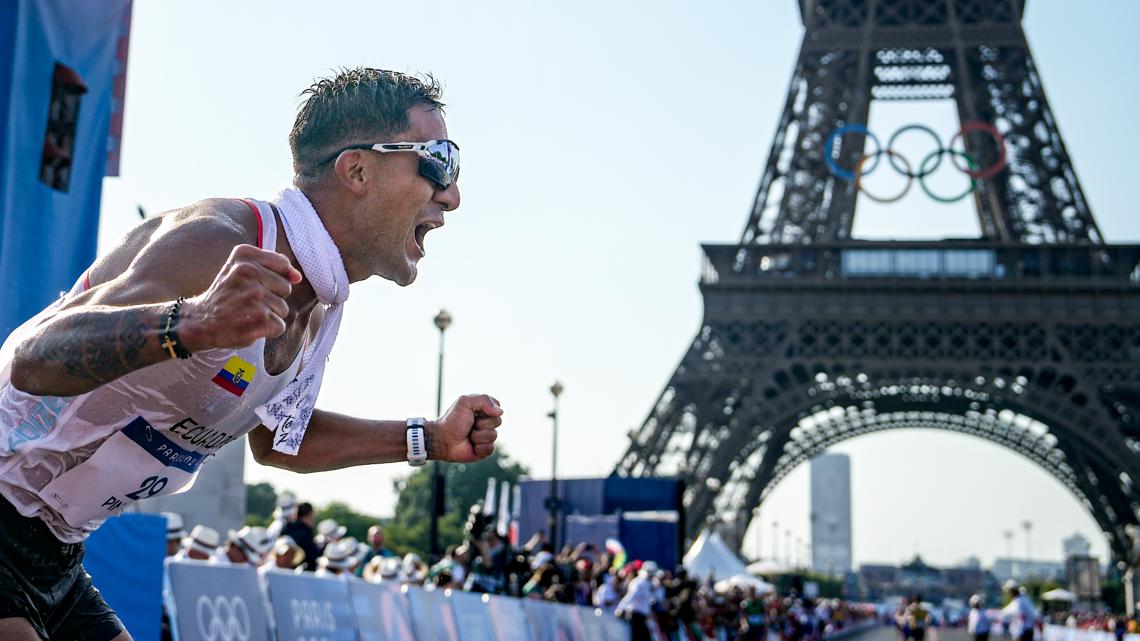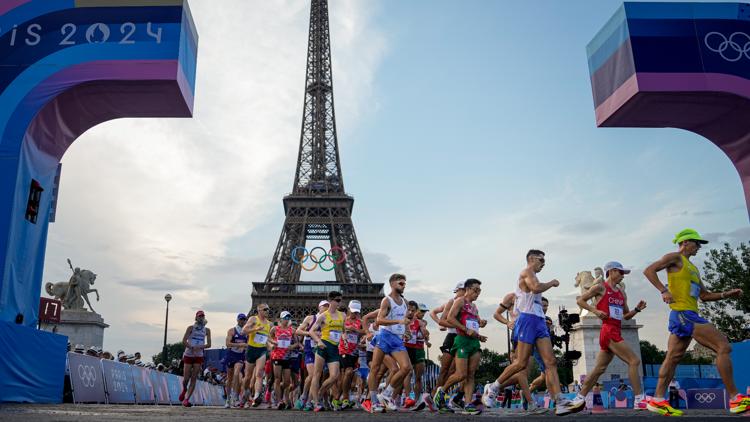PARIS, France — Do a quick Google search for "weird Olympic sports," and you'll see more than a few mentions of race walking.
Participants must walk as quickly as they can while following strict technique rules that include keeping one foot on the ground at all times.
It has its roots as a high-society pastime in the Victorian era, according to the International Olympic Committee. It came to the United States in the late 19th century. At that time, bets were placed on which participants would drop out first. They would walk nearly 1,000 km in six days, the IOC says.
The sport was formalized in England and made its Olympic debut in 1904.
According to race rules, participants have to always have one foot in visible contact with the ground. Their front knee also has to be straight as they pass over it.
Judges watch the race and show walkers paddles with symbols on them to indicate if they are breaking either of those rules.
For those in America, 20 kilometers is equal to about 12.4274 miles.
So how fast are the race walkers able to get moving?
In the women's 20 km race at the Paris Olympics, China's world record holder Yang Jiayu won the Olympic gold with a time of 1:25.54.
Ecuador's Brian Daniel Pintad took home the Paris gold in the men's 20km race walking event finishing in 1:18:55 in his third Olympic appearance.





